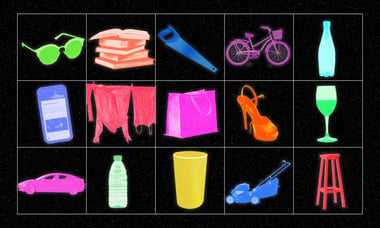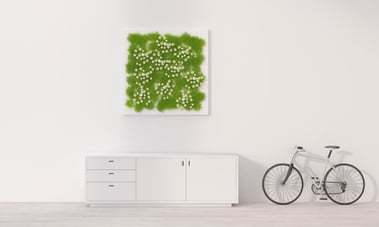Minimalism reconsidered - #368

When I worked in advertising, our design brief had three initial options for the overall style. They were traditional, modern, or other. 95% of the project briefs ticked the modern box. This was surprising: our firm did creative work for southern small business owners and southern politicians. They were, almost to a person, the old boys club members you'd expect. They were so conservative that I'm not sure they believed Pepsi to be an acceptable soft drink. It was only Coca-Cola and our clients were Coke classic incarnate. Yet, they asked for their designs to be modern.
The designers would produce designs with contemporary elements like sans serif fonts and simple, bold color palettes, and our clients would ask for revisions to include cursive, serifs, and red, white, and blue. They were traditional people. Somehow, though, the concept of modern got ahold of their imaginations. Who wants to be old-fashioned? Modern's branding people are more powerful than Coke's. I think minimalism may the same level of branding; for most of us, it certainly has the same misfit.
Everyone says they want to purge their stuff, empty the flat surfaces of their homes, and meditate on nothingness like a minimalist. We like think we're cut out for Dwell. The anywhere/everywhere aesthetic of the Instagram age, where your WeWork decor could place in you in any city on the globe, is minimalist-inspired. Probably a lot of the people who say they're minimalistic have a suitably Instagram-able square in their house. But if you were to turn the camera to the side, most of us aren't minimalists or even minimalistic. You know this if you've ever helped your friends move: most of us are far from the minimalist ideal.
I used to be attracted to minimalism, too. I read ZenHabits and the other blogs. I bought a few books and watched a bunch of documentaries about real life minimalists. And my YouTube feed is still full of people who live in off the grid in remote cabins, or have adopted van life, or, lately, it's full of people that sell all their stuff and move onto a boat. But when I wrote down my real values, I didn't include the word minimalism. I don't think there's intrinsic virtue in having fewer things or the outward trappings of that aesthetic.
The word I chose for my lifestyle is simplicity. By simplicity, I mean making purposeful lifestyle choices, rather than adopting whatever patterns are out there. Combining simplicity with frugality have been good practices. (I've written about both before: see my posts on simplicity and frugality.)
When I talk about simplicity, I don't mean an aesthetic or a set of objects or a style of house. I don't think it's available for purchase (or for flaunting online--irony noted). The way I define simplicity originally was making purposeful lifestyle choices. That was too vague. You can on-purpose be frenetic. So it evolved to become what's on my desktop background and in my journal today: choosing a calm lifestyle.
The word calm does a lot of the work in defining what I mean by simplicity. I mean having the time to do the important things; having the space to engage in what matters (physical and temporal); spending the money we have in the ways that we think are important. Calm means not being rushed, not being frantic, not living a life full of pressing concerns. Part of the way we've chosen to live this value certainly is having less stuff or fewer activities than an average busy suburban family might have. But another part of the way we've chosen to live a calm lifestyle is being open to and OK with some of the stuff the busyness the chaos that comes with who we are. We're not trying disallow plastic toys in the house: we have four kids under age 12 and the floors of our house are, on average, 32% Lego. We're not trying to buy the most expensive minimalist furniture or highest-quality, hand-made materials. We're ok with what fits into our limits.
Here's an example from this morning: I dictated most of this email onto a five year-old iPhone while riding on an exercise bike I purchased used and from which I've removed the broken electronics. This isn't the picture of minimalism: the broken bike parts are on the floor in a pile. The lifestyle of simplicity doesn't mean having only the worlds finest things and big, empty rooms like the photography you'll see on the minimalist blogs. A lifestyle of simplicity means to not worry about that stuff.
These thoughts were inspired by two pieces I found in the Guardian. The first link is about whether our stuff is really weighing down ourselves and our planet; the second is about how minimalism became a form of conspicuous consumption. Enjoy the reading!
Reading
 Too much stuff: can we solve our addiction to consumerism?
Too much stuff: can we solve our addiction to consumerism?
Alarmed by the rising tide of waste we are all creating, my family and I decided to try to make do with much less. But while individual behaviour is important, real change will require action on a far bigger scale.
 Minimalism: another boring product wealthy people can buy
Minimalism: another boring product wealthy people can buy
Minimalism is just another form of conspicuous consumption, a way of saying to the world: ‘Look at me! Look at all of the things I have refused to buy!’